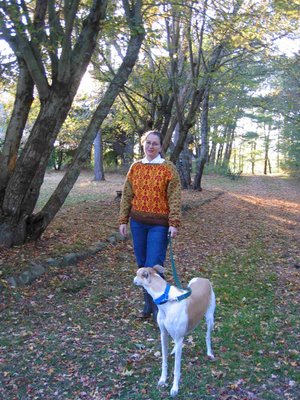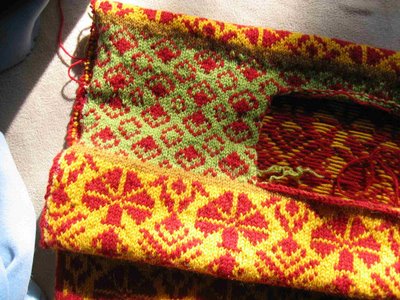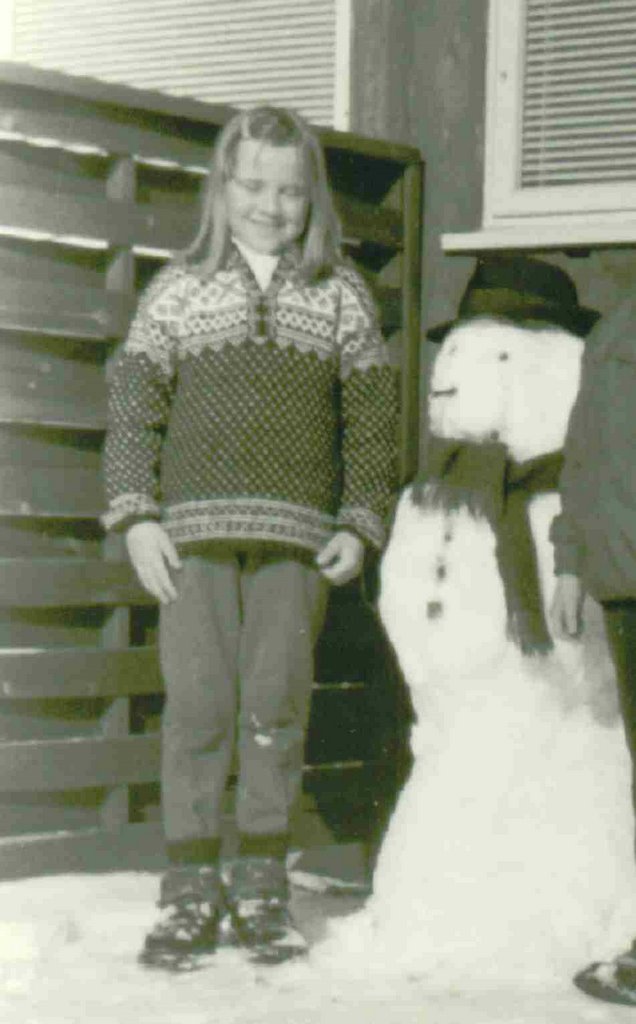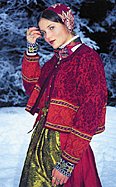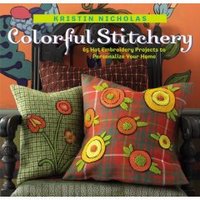
The second of my three projects. It's been so long since I published FO number one, that it seems lame to now bring out FO number 2. We will just forget about that whole numbering scheme... Instead I am naming it the Glowing Colors Sweater, formerly known as the yellow, red and green sweater.

I finished this on Saturday morning, and I have been wearing it ever since. It is so incredibly comfortable, nice and warm, but not too warm, very lightweight. I love the square neckline, and the tapered sleeves. It is practically windproof with that double thickness of wool, but not too hot at all. This yarn is perfect. I have usually worked with worsted yarn before (
worsted type, not worsted weight), and this is
woolen yarn. It traps a lot of air, and therefore is very lightweight, and seems to keep the perfect temperature indoors and out. Most knitting yarn is worsted, and therefore heavier.
I tested it out by walking all around Cambridge Sunday, in alternatingly sunny, windy and overcast weather, and then sat down on the ground to watch some of the
Head of the Charles regatta, and never got cold, never got hot. It's also been great for walking Pippi.
 Detail of sleeve patterns
Detail of sleeve patterns
Only problem, you don't get to see this sleeve pattern much, because the sleeves are too long on me and bunch up a little. I may have to make them shorter... Arrgh!
Blossom, I am ready to swap this now, for a bottle of tequila...
 The finishing for the neck and the sleeve.
The finishing for the neck and the sleeve. From "Norsk Strikkebok", 1990, Tone Takle and Lise Kolstad
English version known as "
Sweaters: 28 Contemporary Designs in the Norwegian Tradition".
Yarn: Rauma
3-tr Strikkegarn, from
Nordic Fiber ArtsSize: Unisex size Small
Colors: Yellow 131, red 144, green 198, honey 146, brown 199
(I think of the colors as Saffron, Red Pepper, Apple, Honey, and Chocolate. I am always thinking of food). The red is one of the most beautiful dark reds I have seen.
Modifications: Square neck instead of round, tapered sleeves with cuffs and picot edge, changed the dark natural brown with a lighter brown. I kind of wish now that I had stuck with the original dark black/brown color; it would have been a much better contrast.
The great thing about this book is that it's kind of a recipe for making sweaters. It has modular sweater instructions in the back where you pick the neck style (boat, round, square), the size (kids to adults), the gauge (baby wool to bulky). But there is so much more than sweaters though; there are several jackets, child's dress, a cape, a long coat and many really cute hats. I have made a few in the past. Too bad this book is out of print, it's one of my favorites.
Thanks to the husband for taking the pictures!

 Glittertind, not to be confused with Dale of Norway's Glittertind. That came later.
Glittertind, not to be confused with Dale of Norway's Glittertind. That came later.
 Norsk Strikk: Fra Tradisjon Til Mote. Editor Kari Hestnes, 1992.
Norsk Strikk: Fra Tradisjon Til Mote. Editor Kari Hestnes, 1992. Norway's second highest mountain. From this page which makes me all homesick.
Norway's second highest mountain. From this page which makes me all homesick. Well, ok, I have only done about four-five rounds, this sleeve was already underway.
Well, ok, I have only done about four-five rounds, this sleeve was already underway.































